WOMEN + POWER
Works in this portfolio, spanning from the late Renaissance to the 21st century and created by both male and female artists in a variety of media, invite a conversation about gender stereotypes and the objectifying of women; women’s rights and their abuses; fragility and power. They include established nobility or society portraits codifying traditional roles for women and images that embody the diverse, complex, and often discriminatory experiences women have had over the course of history. Among them, examples by contemporary female artists appropriate traditional imagery and reinterpret it to both shed light on discrimination and assert a powerful, female point of view.
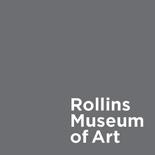
After Frans Pourbus the Younger (Flemish, 1569-1622)
This likeness of the queen of France typifies the ruler’s portrait according to a tradition going back to antiquity. The sitter is depicted from the chest up, in full or semi-profile, her clothes and jewelry denoting wealth and rank. Her marriage to King Henry IV of France was intended as a symbol of peace between French Catholics and Protestants. Instead, it was in fact a prelude to the slaughter of Protestants on St. Bartholomew’s Day, six days after the wedding.
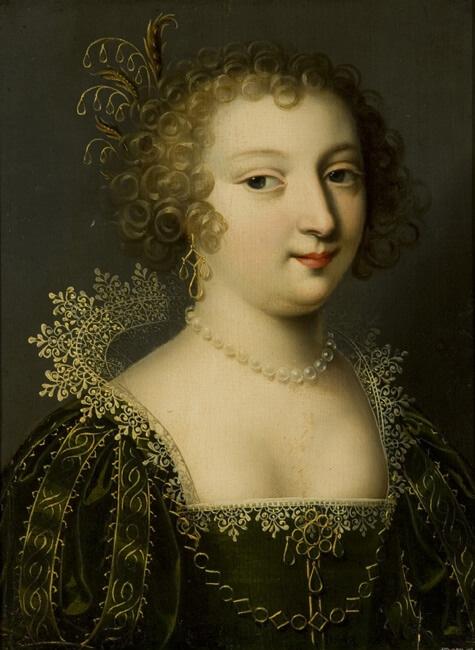
Accession Number: 1962.4
Title: Portrait of Marguerite de Valois
Date: ca. 1610
Medium: Oil on panel
Rights: Public domain

KEYWORDS
aristocracy; royalty; women; religious wars; political alliances; portraiture; power.
VIEW OBJECT FILE
Rina Banerjee
(American, b. Kolkata, West Benghal, India, 1963)
Bringing together disparate historic objects, this sculpture questions their meaning and how it changes depending on context. The work is about the movement of goods and people; here, the focus is on domestic slavery. The birdcage forms the central part of the sculpture; its open door suggests the possibility of flight from bondage.

Accession Number: 2016.20
Title: Her captivity was once someone’s treasure and even pleasure but she blew and flew away took root which grew, we knew this was like no other feather, a third kind of bird that perched on vine intertwined was neither native nor her queens daughters…
Date: 2011

Medium: Anglo-Indian pedestal 1860, Victorian birdcage, shells, feathers, gourds, grape wine, coral, fractured charlotte doll heads, steel knitted mesh with glass beads
Rights:
KEYWORDS
global commerce; cultural exchanges; domestic slavery; captivity; bondage; women; power.
Carrie Mae Weems (American, b. 1963)
By photographing herself in front of the Louvre –the first public art museum – Carrie Mae Weems questions the position of women vis-à-vis museums as institutions, the existing cultural hierarchy, and the canon of art history. At the same time, the work highlights the lack of representation of black artists, and especially black women artists, from this venerable European museum.
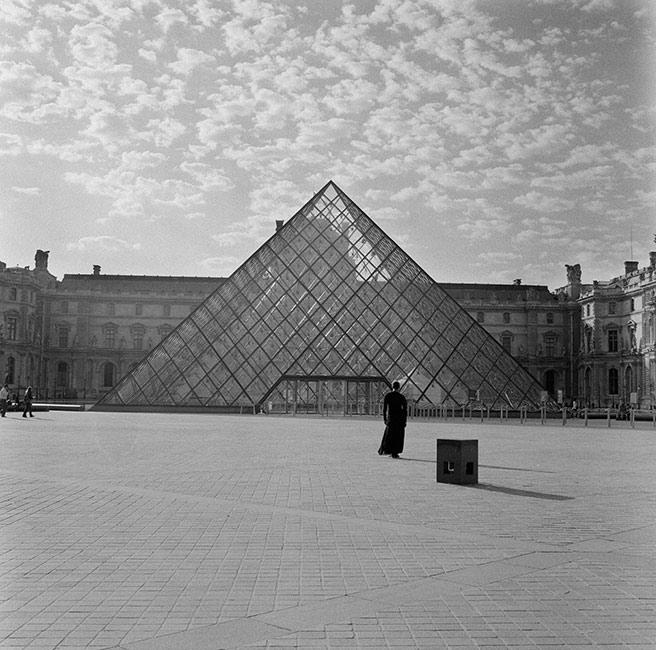
Accession Number: 2014.1.24
Title: Louvre
Date: 2006
Medium: Digital c-print
Rights: © Carrie Mae Weems. Image courtesy of the artist and Jack Shainman Gallery, New York
KEYWORDS
African American women; public museums; discrimination; art historical canon; self-portrait; women; power.
VIEW OBJECT FILE

Dana Hoey (American, b. 1966)
Photography has been a preferred medium for recording and redefining women’s history. Hoey’s compositions defy stereotypical portrayals of women, often featuring motifs of fighters. Here she turns the camera on herself as a statement of power. The charged composition with eyes bruised and a pose recalling the method of response in fighting to symbolize her retort, We On, was created following the United States presidential election results of November 8, 2016.

Accession Number: 2017.6.1
Title: We On
Date: 2016
Medium: Digital print

Rights: © Dana Hoey. Image courtesy of the artist and Petzel, New York
KEYWORDS
women’s rights; activism; stereotypes; women; selfportrait; gender; violence; power.
VIEW OBJECT FILE
Lalla Essaydi (Moroccan, b. 1956)
Essaydi comments on the subordination women experience in some Islamic society by transforming long standing visual traditions. Having firsthand knowledge of such discrimination, the artist subverts accepted norms by covering the female figure’s body in Arabic calligraphy (when traditionally women could not acquire knowledge of calligraphy) and having her look directly, and defiantly, at us. The architectural setting reinforces the hierarchical layers of Islamic society, with strict control of access to the public space and the marketplace of ideas.

Accession Number: 2013.34.55
Title: Harem #I
Date: 2009
Medium: C-41 print on aluminum
Rights: Image courtesy of the artist and the Miller Yezerski Gallery, Boston
KEYWORDS

Margaret Bourke-White (American, 1904-1971)
Bourke-White was the first American photojournalist to be allowed into the Soviet Union. This photograph illustrates the presence of Soviet women in the workforce. Falling for Soviet propaganda while attempting to reconcile it with American notions of feminine comportment, the artist commented that the Russian woman is “… working to advance the great industrial program of which she feels she is part. She is never conscious of a conflict between her career and her personal life.”

Accession Number: 2013.22
Title: At the Lathe “Hammer & Sickle” Factory: Moscow
Date: 1931
Medium: Photogravure print

Rights: © Margaret Bourke-White/Artists Rights Society (ARS), New York
KEYWORDS
gender stereotypes; USSR; women in industry; photojournalism; women; labor; power.
VIEW OBJECT FILE
Lorna Simpson (American, b. 1960)
Lorna Simpson combines photography and text to address definitions of race, gender, and identity. The fragmenting of the human figure which omits the subject’s identity and the pairing of image and caption disrupt a traditional reading of a portrait. Thus, the woman’s clavicle, the coiled hair braid, and the brick smokehouse once used to house slaves, together with the enumerations that surround the images, start a story that refuses a linear meaning and invites parallel readings.
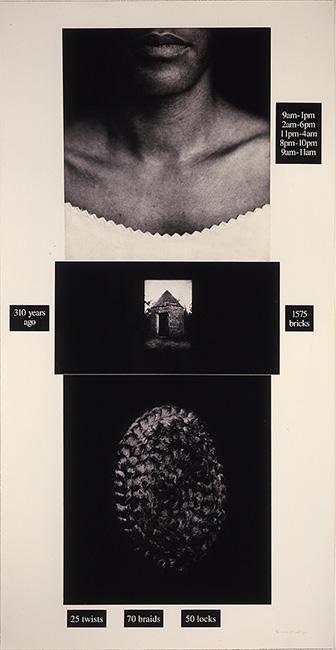
Accession Number: 1998.10
Title: Counting
Date: 1991
Medium: Photogravure and screenprint

Rights: © Lorna Simpson. Image courtesy the artist and Hauser & Wirth
KEYWORDS
gender; race; identity; power; slavery; African American experience, women. VIEW
Elsa María Melendez (Puerto Rican, b. 1974)
Made in response to a 2019 women’s rights march in Puerto Rico to defend the right to safe abortions (which was met with the force of riot police), this textile work adopts the shape of a flower, the universal symbol of purity and femininity. Its center, however, opens to reveal the bright red and vulnerable inside of the flower/woman, and its title suggests the violence contained inside as a metaphor for the female body.
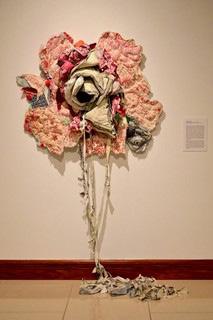
Accession Number: 2021.3
Title: Ustedes aquí adentro, esto es bien violento (You in Here, This is Very Violent),
Date: 2019
Medium: Serigraph on textiles, sewn, embroidered and stuffed, scraps of fabric, cushion stuffing, foam and synthetic materials

Rights: © Elsa María Meléndez
KEYWORDS
female agency; women; abortion; sexuality; violence; women’s rights; activism; power.
Charles Loring Elliott (American, 1812-1868)
This portrait embodies 19th century societal norms: the austerity of the setting befits the wife of a Protestant minister; her dress is of good quality without being ostentatious; her gaze is kind but meek. Residents of Syracuse, NY, the Furman were associated with the abolitionist movement. Despite such socially radical preferences, this austere portrait conveys the quiet humility of the devout.
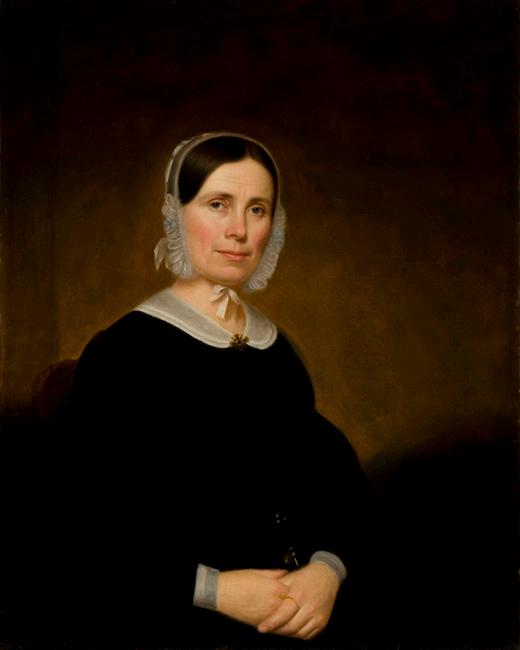
Accession Number: 1956.19.2
Title: Portrait of Melinda Wilkens Furman
Date: 1845
Medium: Oil on canvas
Rights: Public domain

KEYWORDS
abolitionism; gender norms; portraiture, women, power; peity; fashion.
VIEW OBJECT FILE
ADDITIONAL WORKS

Deborah Kaas, Triple Ghost Yentl, 1997
Hank Willis Thomas, Walk like a Man, 2015
Hank Willis Thomas, She Keeps Me Warm, 2015
Hank Willis Thomas, Behind Every Man…, 2015
Elinor Carruci, Court Collar, 2020
Lubaina Himid, Three Architects and Close-up (Ideas for Development), 2019

